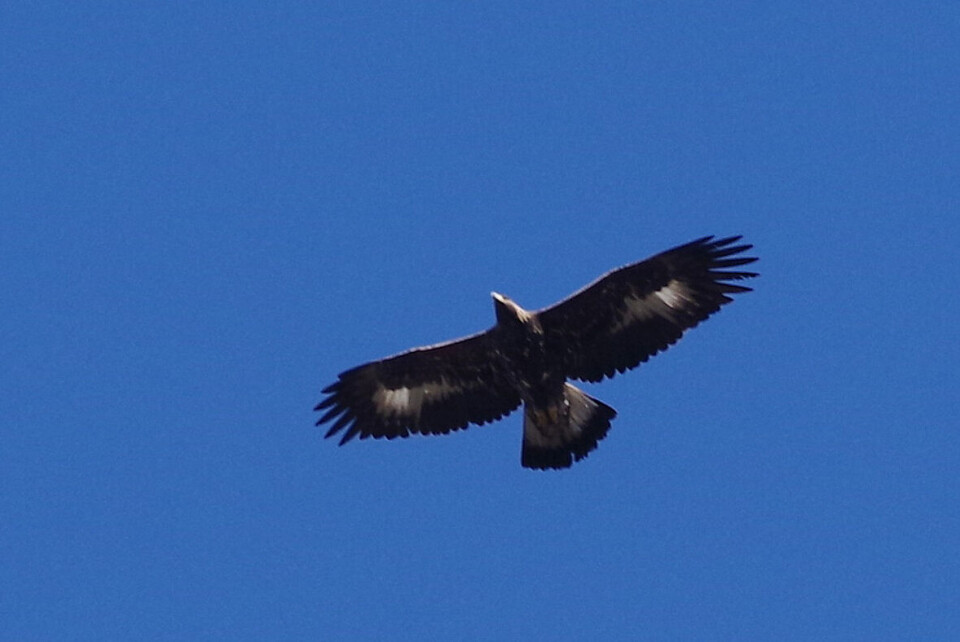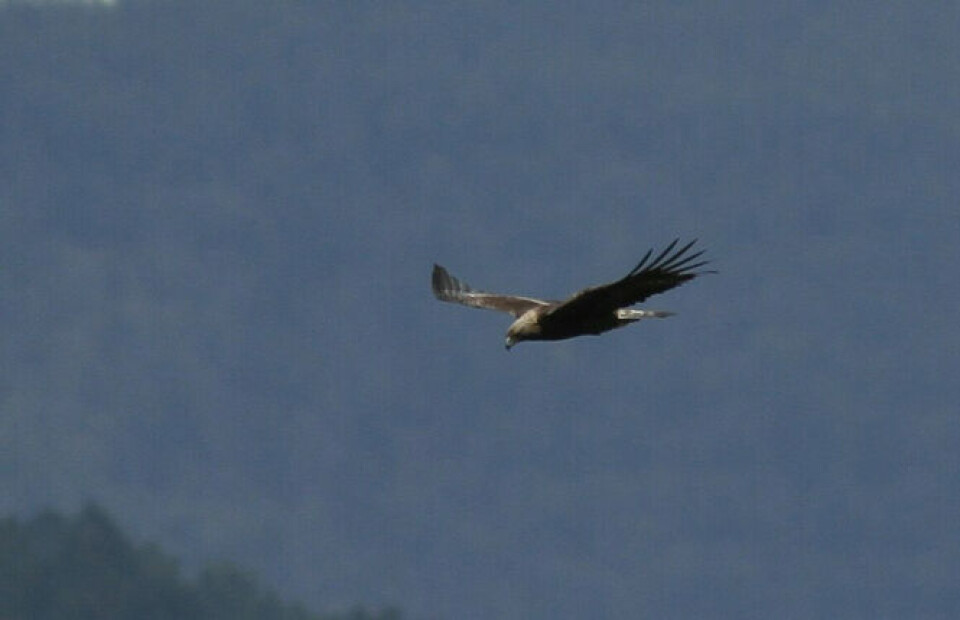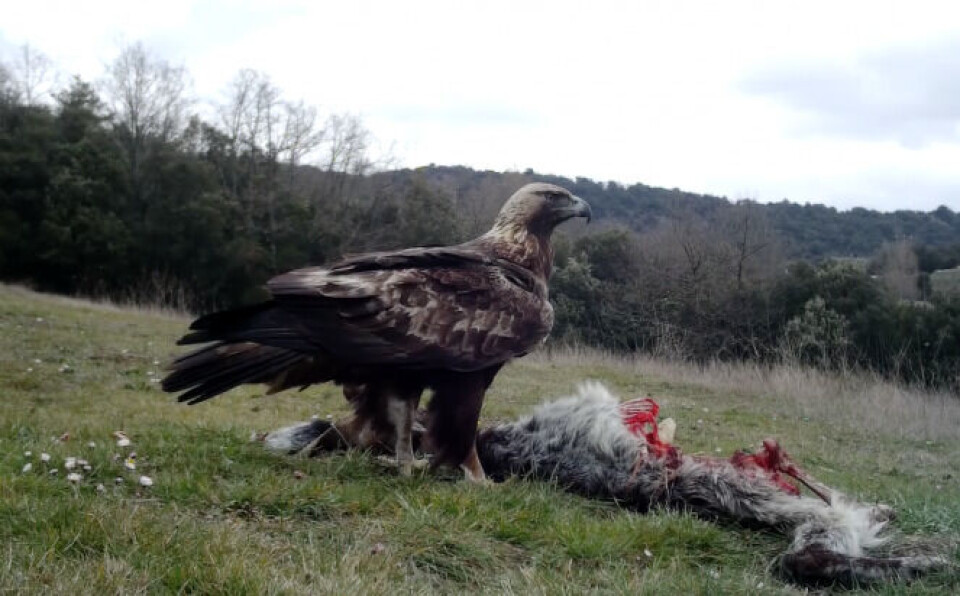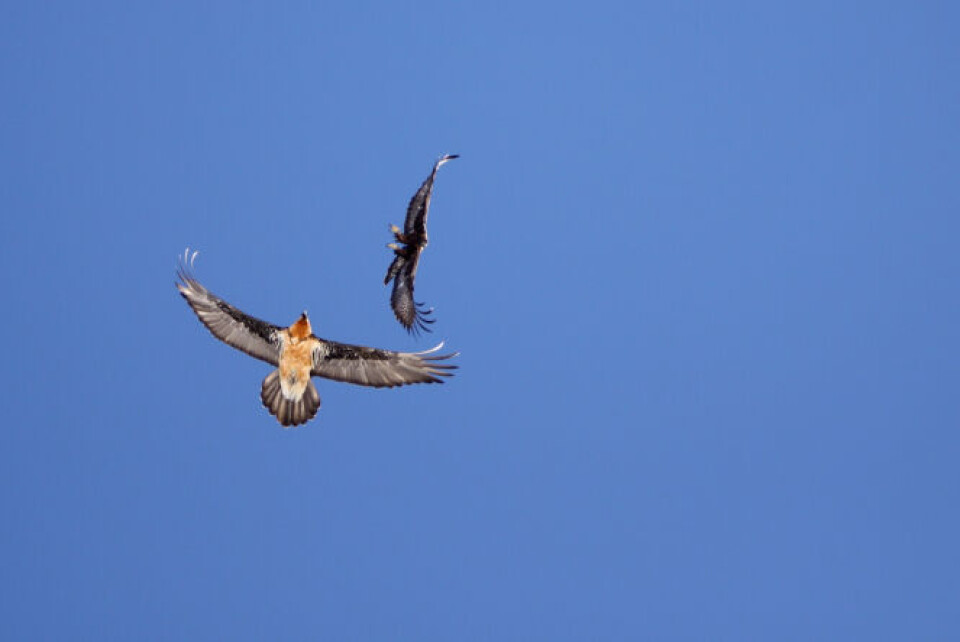-
What you should do to your garden in France in spring
Weeding, pruning, sowing, preparing the lawn…here is how to welcome sunnier days
-
Rules change for dog walking in France from April
Here is how to ensure you and your dog remain within the rules and avoid fines
-
Mimosa is pretty…but ‘posing threat to biodiversity’ in south of France
The flowers are prized in the region, but not everyone is thrilled to see their spread
Eagles put on memorable display in France
Jonathan Kemp enjoys a splendid – and tender – display of avian acrobatics

We are at the time of year when the largest birds on the European continent are preparing for next year’s nesting season, amazing as that might seem as winter is only just taking hold.
However, these birds have months of care before them, intense efforts to bring their single chick successfully into the world, feed and protect it until fledging, and then teach it the skills that it will need to survive and prosper to independence.
Read more: Birdwatcher’s guide to France: Nature reserves, parks and trails
Above all, this is a schedule that applies to the Bearded vulture (Gypaète barbu), but they have large territories, and do not necessarily choose a previous nesting site, so time needs to be spent carefully watching, hoping to find where a resident couple is going to settle.
It might be the same site as earlier in the year, but might not be – different factors come into play which the experts sometimes can only guess at, and if a fairly regular watch has not been kept, important clues can be missed.
Disturbance – often from human activity, mainly accidental – is a major risk; weather conditions too can play a part.
These long lived birds need to gain experience, and often are not mature enough to successfully breed in their first decade of life; they too need to learn the location that works.
That was the principal reason why I, with a friend, was sitting on a hill side last Sunday as the late afternoon light began to fade with the sun setting behind the mountains to the west.
It had been a sunny day, and the cliff face before us still radiated up warm air thermals; coupled with a slight but steady wind producing ideal flying conditions for big raptors.
They combined to give one of the most wonderful avian displays that either of us had ever seen, and it should be said that my friend has been avidly watching birds since she was a young child, and is out nearly every day, watching the skies.
Across the valley there appeared a huge, dark shape hanging motionless over the top of the peak in front of us.
Not a Bearded vulture but a Golden eagle (Aigle royale).

A Golden eagle in flight Pic: : Francine Terrier
Usually the display flight of a Golden eagle is a flamboyant show of mastery of the air; as this, the royalty of birds, demonstrates to potential rivals and its mate a show of power, its dominance of a territory.
It will climb high in the air and then, wings folded back, dive down in a series of looping switch backs, sweeping back up again to about the same height; this is called ‘festoon’ in French.
I once watched fifteen of these dives, one after another, and it was awe-inspiring to see. It is said that the speeds reached can exceed two hundred kilometres an hour.
You have to be lucky to see it.
The shape we were watching was so still, motionless, that at first I could hardly believe it was a real bird; not even stirring a wing to keep itself poised in the air, neither advancing or being blown back, a demonstration of absolute control.
Then, just above, was a second silhouette, even larger, the female eagle likewise poised above her partner, both so still that we didn’t need to move our telescopes.
Were they hunting, scanning the slopes below them for a late catch as the sun was setting?
Well, it is a possibility, but what followed next convinced me that more was going on.
Very slowly, the larger bird drifted down to touch the back of her mate with her lowered talons; he dropped a little, twisting to one side, before pulling back up so that the two birds resumed the balanced formation as before.
In the ten minutes we watched, she did this three times; it was a dance, a display (parade), a delicate, slow tango of gentle intimacy and grace between two of the most magnificent birds in the whole avian world.
Eagles are renowned for the ferocity with which they will defend a territory, they have the stare of a grim warlord, a fearsome beak, massive power in the grasping talons, the enormity of their presence - the wingspan of a female can grow to two metres thirty centimetres.

A Golden eagle on a goat's carcass Pic: Matthieu Vaslin
But here we were watching another side of these birds, a tenderness, an intimate moment between a bonded couple.
I don’t know if this behaviour has ever been seen by others; but we both felt blessed to witness such a thing, and I will never forget it.
There are plenty of videos on the internet that show the aggressive side of the species, ready to battle with those awesome six centimetre talons (serres) over territory and food.
Sometimes two eagles will lock talons and spiral down towards the ground, only releasing at the last moment.
These birds have little to fear, they are apex predators, but are often harassed by ravens and other corvids who fly behind and mob them as soon as they are spotted.
In winter the adults will eat from carcasses on feeding stations, but rarely will give this to the chicks.
The other scavengers will give way, but will try to make the eagle’s stay as disturbed as possible – ravens even coming from behind the tail of a feeding eagle and pulling its tail feathers, before leaping prudently away!
Even though the Bearded vulture has nearly one metre more wingspan, it does not have the weaponry that makes eagles so formidable.
If provoked, however, when close to its nesting site, the Bearded vulture will turn on its rival and drive it away, as the photo below shows.

Interaction between Bearded vulture and Golden eagle Pic: Christian Couloumy
Related articles
Snakes, wader birds and the wrath of hunters in French countryside
Spring nature spotting in France: clues animals and birds leave behind
Sea eagles to be released over Lake Geneva after 130-year absence
























